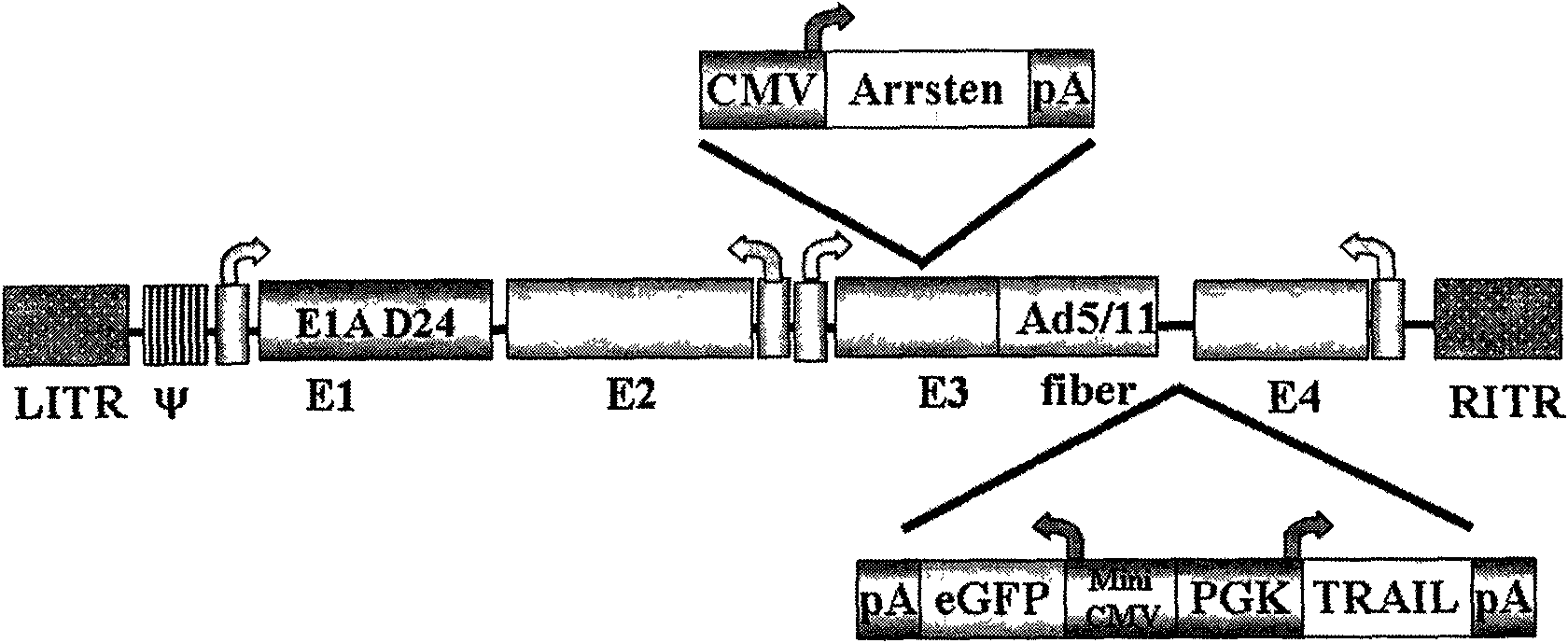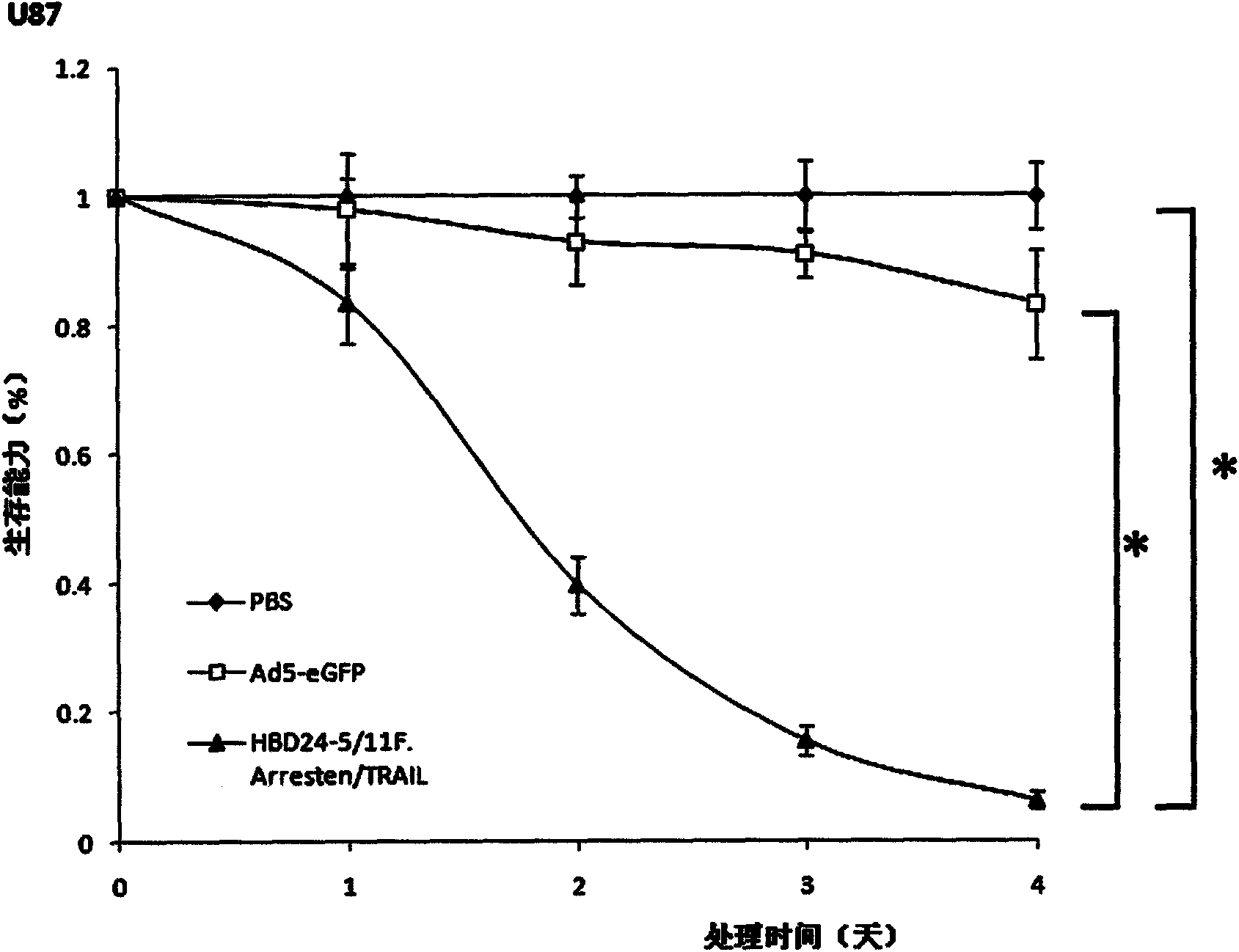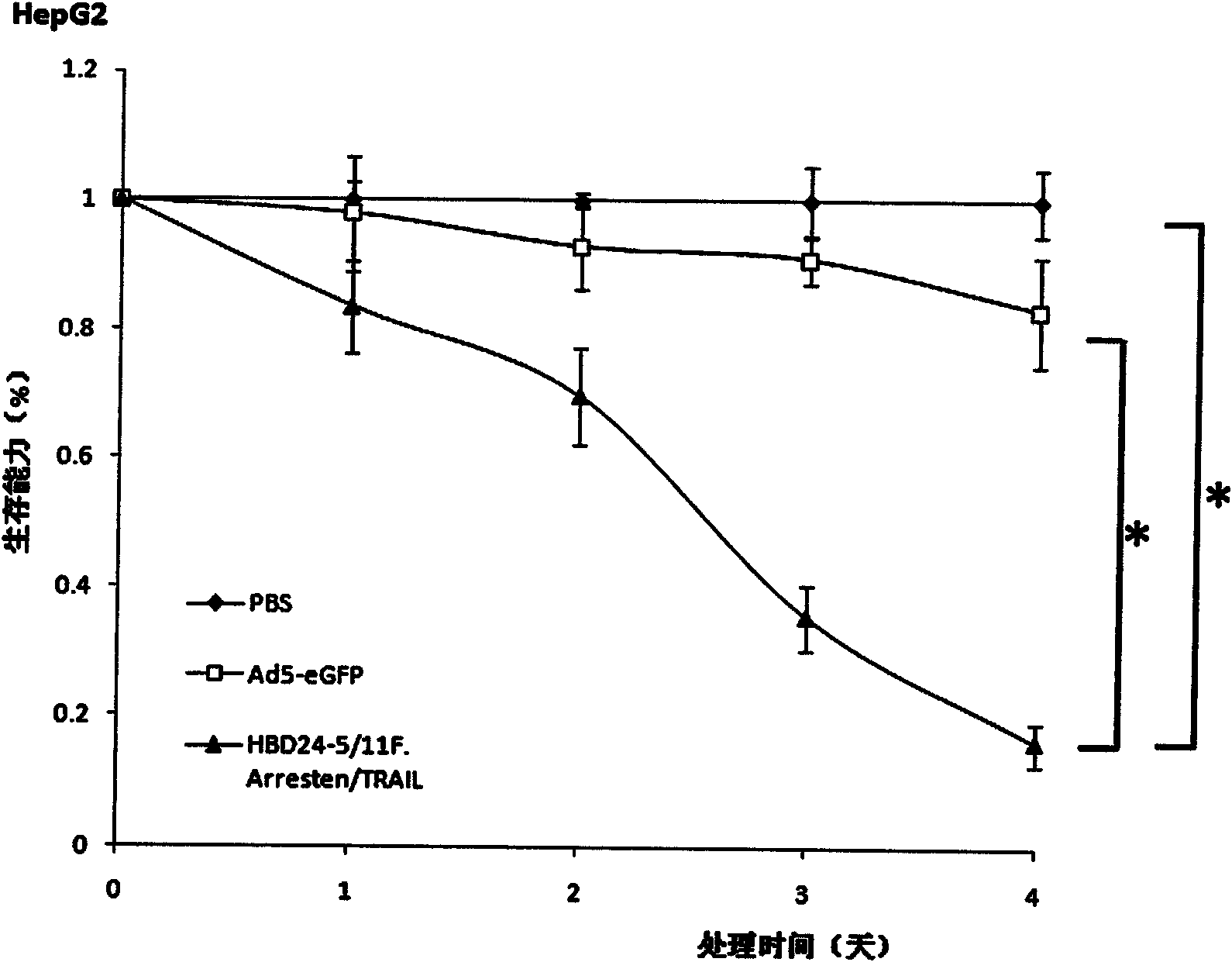Oncolytic adenovirus vector for modifying and expressing two exogenous genes by fibrin, construction method and application of vector
An oncolytic adenovirus and exogenous gene technology, applied in the field of oncolytic adenovirus vectors, can solve the problem of unsatisfactory treatment effect
- Summary
- Abstract
- Description
- Claims
- Application Information
AI Technical Summary
Problems solved by technology
Method used
Image
Examples
Embodiment 1
[0049] The oncolytic adenoviral vector HBD24-5 / 11F.Arresten / TRAIL expressing two exogenous genes modified by fibrin in this example is as follows:
[0050] 1. There is a 24 bp deletion between the 922bp-947bp in the human adenovirus vector type 5 genome. The missing 24bp base sequence is: CTTACCTGCCACCAGGCTGGCTTT.
[0051] 2. Insert an Arresten expression element between 28183bp and 29906bp in the human adenovirus vector type 5 genome. The sequence of the Arresten expression element is:
[0052] gtcgacacgcgttgacattgattattgactagttattaatagtaatcaattacggggtcattagttcatagcc
[0053] catatatggagttccgcgttacataacttacggtaaatggcccgcctggctgaccgcccaacgacccccgccc
[0054] attgacgtcaataatgacgtatgttcccatagtaacgccaatagggactttccattgacgtcaatgggtggag
[0055] tattacggtaaactgcccacttggcagtacatcaagtgtatcatatgccaagtacgccccctattgacgtca
[0056] atgacggtaaatggcccgcctggcattatgcccagtacatgaccttatgggactttcctacttggcagtacat
[0057] ctacgtattagtcatcgctattaccatggtgatgcggttttggcagtacatcaatgggcgtggatagcggt...
Embodiment 2
[0154] In this example, the fibrin modified oncolytic adenoviral vector HBD24-5 / 11F.Endostatin / TRAIL expressing two foreign genes is as follows:
[0155] The first exogenous gene Arresten in Example 1 was replaced with Endostatin. The other structures are the same as those in Example 1, constituting an oncolytic adenoviral vector HBD24-5 / 11F.Endostatin / TRAIL that expresses two foreign genes modified by fibrin.
[0156] Its construction method is the same as in Example 1.
Embodiment 3
[0158] In this example, the fibrin modified oncolytic adenoviral vector HBD24-5 / 11F.IL-24 / TRAIL expressing two foreign genes is as follows:
[0159] The first exogenous gene Arresten in Example 1 was replaced with IL-24. The other structures are the same as in Example 1, which constitutes an oncolytic adenoviral vector HBD24-5 / 11F.IL-24 / TRAIL that expresses two foreign genes modified by fibrin.
[0160] Its construction method is the same as in Example 1.
PUM
 Login to View More
Login to View More Abstract
Description
Claims
Application Information
 Login to View More
Login to View More - R&D
- Intellectual Property
- Life Sciences
- Materials
- Tech Scout
- Unparalleled Data Quality
- Higher Quality Content
- 60% Fewer Hallucinations
Browse by: Latest US Patents, China's latest patents, Technical Efficacy Thesaurus, Application Domain, Technology Topic, Popular Technical Reports.
© 2025 PatSnap. All rights reserved.Legal|Privacy policy|Modern Slavery Act Transparency Statement|Sitemap|About US| Contact US: help@patsnap.com



